Here are 4 key questions you should ask yourself:
01.Decide why do you want to learn
What is the objective of your learning? Is it just to know, is it to get a new job, are you learning for the certification or are you learning purely for the knowledge? For most people, the primary reason for taking a course is to gain a “piece of paper” from an accredited institution like Red & Yellow that confirms that this person has these skills and at this level. If that’s the case with you, then pick your institution wisely because future employers will judge you not just on what you say you know, but on the quality of the education institution that certified you.
As with most things in life, you get what you pay for. While organisations will certainly respect anyone who wants to better themselves, future employers tend to put less weight in qualifications from free or pure online course providers, versus ones from established academic institutions.
Another reason to pay for a course is if the skill is very niche or new, and free online offerings aren’t quite good enough yet; or if the return on time/money spent on the course has the potential to be so high, that having a possibly substandard education experience is not worth the risk.
If your goal is simply to gain knowledge, then do as many free courses as possible. However, it is worth remembering that time is your most valued asset which means it may be worth paying for a course which provides you with instructors, mentors and coaches who can help will multiply the value of your time investment. Again, this is where established campus based institutions outrank online-only providers – students can meet their lecturers and academic staff either physically or virtually and engage with them over what they are learning.
02. Are you filling a weakness or boosting a strength?
Your time and money are precious commodities. So invest them in making your strengths stronger, rather than your weaknesses less weak. Strengths are strengths because they come naturally to you and you love doing them. Weaknesses are the exact opposite. They are hard and you generally don’t enjoy them. Take a few tests to understand yourself better and map out your strengths and weaknesses in relation to your career. The Clifton Strengthsfinder 2.0 test is very affordable, although quite high level. The Personal Profile Analysis (PPA) from Thomas International is more detailed, but substantially more expensive.
Or skip the tests if you’re really self-aware, but either way, a critical starting point is knowing what you’re good at and what you’re not, what you enjoy and what you don’t. Once you’ve mapped this out, look at your weaknesses and ask yourself not “is this holding me back?”, but “is this weakness hurting me?”.
Then only look to add that skill to your learning journey if it answers the latter. If it’s only just holding you back a little, then move on. Because putting the same time and effort into boosting a strength will propel you forward much more than a weakness will hold you back.
03. What is the time frame of your objective?
If you want to prove you have the skills for that new management position, then a quick course is a must – and do it sooner rather than later. If you’re trying to add to your total body of skills and knowledge to build a successful long term career, then a longer course. or series of shorter courses that build on each other, is probably more appropriate. Your career stage is also relevant here. The more senior you are, the less time you will have for learning, which means focussing on short sharp skills injections that have a multiplier effect on your strengths.
The important point here is that learning is not a one-off event and to be successful, it never stops. You have to always be looking for opportunities to learn and grow. It’s best to not only map out a formal learning journey, but also be sure to build the systems to support it. For example, set aside even just half an hour each morning to read. A simple system like this adds up pretty quickly to some significant growth.
04. Can you ‘learn’ and ‘do’ at the same time?
Finally, learning is better if you are ‘doing’ at the same time. For example, our most popular course is our Digital Marketing online course. We find that the students that do best, and benefit the most, are the ones who are already practicing some form of digital marketing (however basic) and already have their head in the game. This allows them to immediately apply what they learn on the course, and provides context which boosts the learning experience immensely. Literally, as the knowledge comes into their head, they are wrapping it into and around their real world, day-to-day existence, rather than trying to remember it for future use. Instead of doing a course so that you can start doing something new; rather start doing something new, and then do a course so you can get dramatically better at it. Whatever you choose to study this year, find ways to get your head in that game so you can think about and practice what you are learning, while you are learning it.
Above all. don’t put too much pressure on yourself. Learning is a gift and should be enjoyable or it tends not to work as well. Tap into something you love, find all the good online resources that cover it, dive into those and then cement your knowledge with excellent courses and programmes from reputable institutions filled with educators who are passionate about growing you.
Happy learning in 2018!


